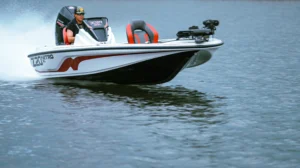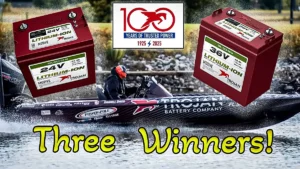At times, the temptation can be downright unbearable. You’ve only got a few hours after work to head to your home lake and put a smack-down on the local bass. As you idle out of the no wake zone and start to put the boat on plane, you find yourself following a familiar route. After fishing a handful of your “history” spots, the sun is setting and you haven’t hooked up to a single keeper bass.
Sound familiar? Welcome to the club because you’re certainly not alone. It’s not easy to drive past areas that have produced countless big bags for you in the past. Although difficult, finding new bass fishing spots on your home lake can lead to a newfound excitement and love for your favorite fishery.
Adopt the right mindset
Every bass angler has a favorite fishing method. Whether you’re a power or finesse fisherman, stepping out of your comfort zone is imperative in order to find new fishing spots. Bass Pro Shops pro Timmy Horton embraced this philosophy early in his career and it has paid off in a big way.
“Perfecting methods you’re not comfortable with will not only help you find new bass fishing spots, but it will also make you a better all-around angler,” Horton said. “I used to be dead-set on throwing a Carolina rig. I was pretty good at it, so I had a ton of confidence doing it. When I started forcing myself to do different things, however, I started catching a lot more fish in very different areas.”
It’s important to be patient when trying new techniques in different areas. If you like to flip a jig in shallow water, don’t expect to fish ledges with a spinning rod and catch a quick limit on a drop shot. It can certainly happen, but try to mentally prepare yourself for a slow, yet educational day on the water.
“Everybody gets a little frustrated when they try different presentations in new areas,” Horton said. “When I was trying to break away from the Carolina rig, I would fight every urge to pick it back up when I wasn’t catching fish. I had to make myself slow down and understand it was okay to mess up.”
Leave yourself no other options
After flipping jigs, banging squarebills and pitching spinnerbaits for several years on my home lake, I started to have the same results after every tournament. If they were eating one of 3, I would catch them pretty well. If the fish were any deeper than 6 feet, my one dimensional approach left me without a chance. Offshore fishing was a totally foreign concept to me, so I took a page from Horton’s playbook.
“I used to take all of my ‘comfort baits’ out of my boat before I went fishing,” Horton said. “This forced me to fish new water with different techniques. I used to be pretty bad at fishing deep crankbaits, but now it’s my favorite thing in the world. It’s opened up a whole new dimension of fishing on my home lakes.”
Watch your electronics or keep bottom contact when fishing deep
If you have money invested in electronics, your search for new fishing spots will be expedited. When Horton is on the lookout for new, productive water, you’ll find him glued to his Humminbird electronics.
“Quality electronics are a great way to find new fishing spots on your favorite lake,” Horton said. “I pay close attention to depth changes and the presence of bait. If I can find cover or a piece of cover, whether it’s a brush pile or rocks, it makes an area even better. I rarely start fishing until I see cover, bait or fish.”
Don’t worry if your rig isn’t outfitted with high-end electronics—bottom contact presentations such as Carolina rigs, football jigs and deep diving crankbaits will help you paint a picture of your new areas’ bottom composition.
After making long casts, pay close attention to what you feel on the bottom. If you feel a steep drop or underwater cover, pick a point of reference on the bank such as an isolated dock, tree or a house. Make note of your boat positioning and try to duplicate your previous cast a few times. If you get a few bites, now you know the general vicinity in which you should cast when you return at a later date. Old fashion marker buoys can also prove invaluable when fishing sans electronics.
Go against the grain
If Horton knows the fish are deep in the summer, he’ll often sneak into shallow, backwater areas to find new fishing spots on his home lake, Pickwick Lake. The lack of fishing pressure in these areas will allow you more time and space to explore the surrounding environment.
“If there’s suitable cover in these backwater areas, they’ll often play host to resident fish throughout the entire year,” Horton said. “A lot of folks won’t take the extra time to get into the really skinny stuff, so the fish don’t get hammered every weekend and are easier to catch. To be safe, just get on your trolling motor, trim your engine up and try to find a way in.”
This theory also works wonders for bank anglers as well. If you have a favorite local pond or river, don’t be afraid to trudge through the thick stuff to find a new hotspot. Try to avoid the telltale signs of overfished small water such as worn out grass, litter and footprints by blazing your own trail. I still enjoy this kind of fishing and do it quite often—just bring some snake boots and bug spray with you.
Try to avoid getting in a rut this summer when fishing your favorite waters. Bass are finicky creatures, so we have to be ahead of the curve and willing to try new areas. If you adopt the right mindset, force yourself to fish differently, pay attention to the bottom composition and go against the grain, you’re probably going to find some new bass fishing honey holes this year.
by Walker Smith












